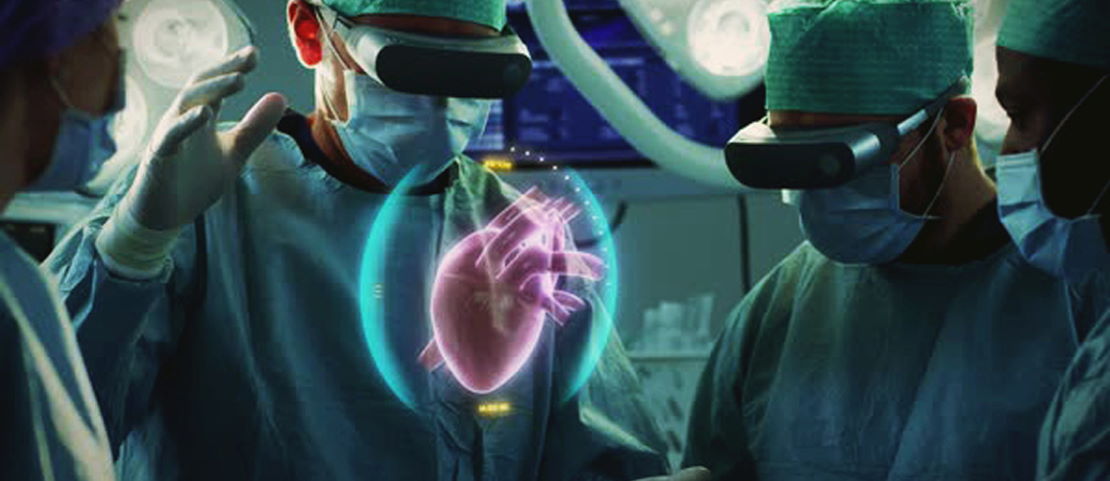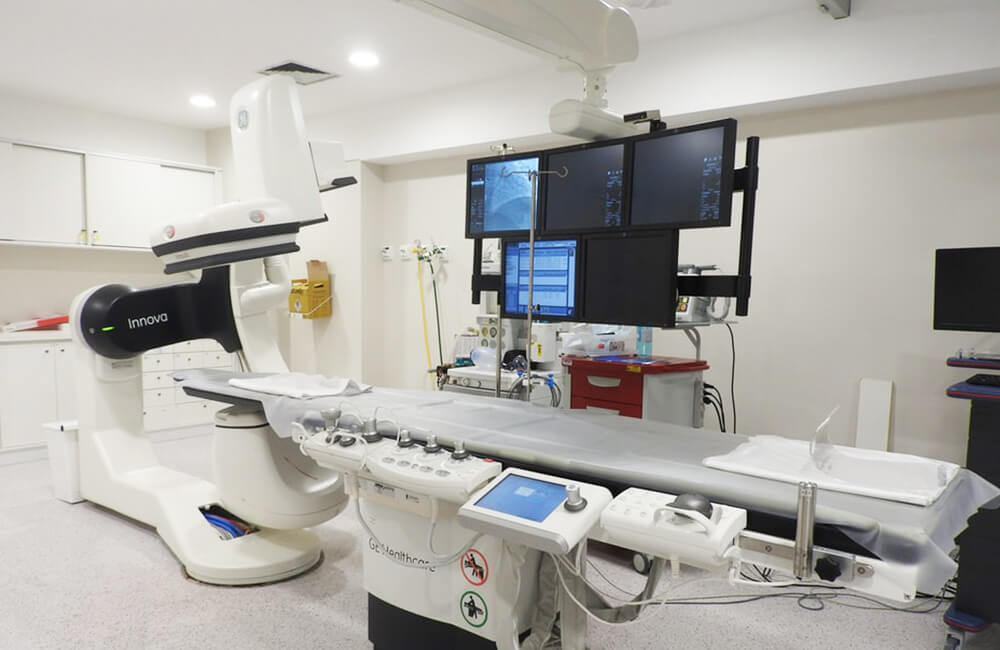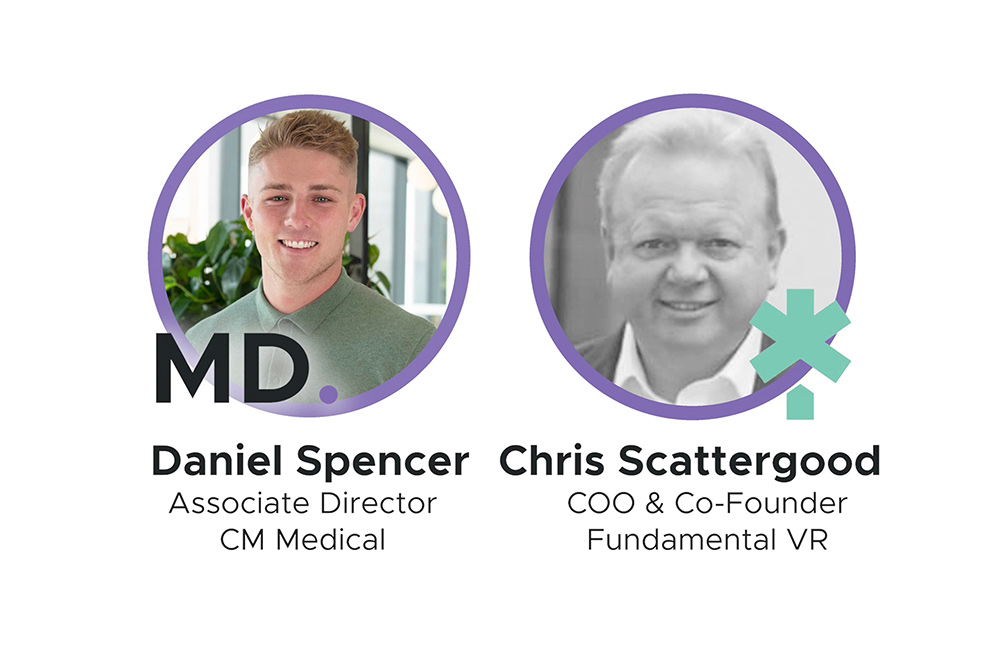

VR & Simulation - The Secret to Better Medical Education & Safer Surgery?
Whilst riding a roller coaster in our living rooms with a VR headset is exciting, a more practical use for the technology is also emerging as a game changer in medical education and surgical planning.
Preparing surgeons for their first experience in the OR is a difficult task. Demonstrations on plastic models or cadavers and textbooks can help, but they only go so far. What VR presents in a surgical setting is the opportunity for a trainee to immerse themselves in a procedure in real-time.
The benefits aren’t just for students, either. The latest simulation technology means that surgeons are better equipped than ever when it comes to preparing for unusual or highly complex procedures.
In an environment where the stakes are so high and the difference between success and failure literally rests on a scalpel edge, the marginal gains represented by technology like this represent a potentially giant leap forward in medical education and surgical planning.
In this article, I’m going to take a look at the capabilities of medical simulation technology.
Game Changing Training
Even if they know every tiny step is being supervised and scrutinised, volunteers are unlikely to be forthcoming for trainee surgeons to practice on. Whilst we might be inclined to take a risk on a great meal from a trainee chef or a cheap haircut, we aren’t going to do the same for our laparoscopy or knee replacement. But for Health Care Professionals (HCP’s) to improve, the more time they spend, and more practice they get in OR-room scenarios the better.
In theory, this is what this technology provides.
Simulation and VR technologies give the HCP an immersive learning experience, allowing them to learn and make mistakes without severe consequences. This means skills can be honed far quicker than through watching procedures and demonstrations. The professional can get hands on experience much quicker.
Take the tools used. Familiarising themselves with the likes of scalpels, drills and saws is a huge part of life as a surgeon. Building muscle memory and familiarity with these items key to both a surgeon’s confidence and competence. Virtually all the simulators on the market today have life-like tools on hand so the student can get used to handling them. One company taking this one step further are Virtamed who build customised simulators which include custom designed tools. This opens up opportunities for those in training to use a wide variety of surgical implements and also appeals to medical device manufacturers who could demonstrate their products’ benefits in a surgical scenario.
Simulators in this field also give the user a full training experience. Montreal-based OSSimTech are manufacturers of one such simulator (see an introduction to their ‘Sim-Ortho’ device here). Their technology provides realistic 3D environments for training in open surgery, allowing users to perform a range of different procedures on the knee, spine or certain trauma cases. This is combined with haptic feedback responsive to the surgeon’s touch, making the experience as authentic as possible.
Not only are the simulators providing a platform, they can also give instruction and feedback. OSSimTech have consulted with senior surgeons to develop metrics for training, meaning that users are provided with real-time feedback on how a surgery is going. Procedures can also be quickly restarted which means that different surgical scenarios can be tested - a level of experimentation would never be permitted (and rightly so) in the real life OR.
Pre-Surgical Planning
The benefits of simulation aren’t just available to brand new surgeons undergoing their training. It also gives experienced surgeons the opportunity to practice complex surgeries before the event. Companies like Precision OS have developed a VR platform that caters for surgeons of all levels, allowing experts to practice complex procedures. When practicing, they can choose to work with or without guidance, allowing them to either receive instruction during a procedure or feedback afterwards.
Visualisation and mapping is another exciting use of AI and VR in the pre surgical phase. Companies like Immersive Touch enable surgeons to transform traditional 2 dimensional CT and MRI scans into high resolution 3D models. These models can then, using a VR headset, be manipulated to observe from any angle. This gives the surgeon a huge advantage when it comes to planning particularly difficult procedures.
This level of preparation gives the surgeon the ability to improve surgical outcomes. The physician can explain every aspect of a surgery to patients and run through the procedure with the OR technicians, ensuring as smooth an outcome as possible.
In highly complex procedures surgeons appreciate all the help they can get. When margins are as fine as they are in surgery in areas like the spine and brain, the help that the ability to practice and map out the procedure with a model provides is invaluable.
Learning Centres Have to Speculate to Accumulate
Unsurprisingly these systems aren’t cheap and current methods of using cadavers or plastic models are currently seen as a lower-cost alternative for teaching hospitals. However, the benefits of a simulator come from reuse value; if a technology is reliable enough to correctly replicate surgical scenarios, the equipment should pay for itself over a period of time, whilst allowing many more HCP’s to practice procedures and hone their skills.
The fact that a simulator can be set up for many different procedures is also massively advantageous from a cost perspective. Take an example like 3D Systems – they offer simulators for endovascular, arthroscopy, GI, laparoscopy and MIS spine procedures, to name a few, and the simulator can be quickly adjusted to replicate each one. Therefore, in theory, every student in a class could attempt every surgery being discussed without entering the OR. The fact that the simulators also provide feedback opens the door for independent learning which, in the future, could also cut teaching costs.
So yes, the initial outlay may be high, but teaching hospitals that have the funds available as well as a ‘bigger picture’ mindset could reap the rewards, and savings, in years to come.
Issues
As with any early stage technology, simulation and VR isn’t perfect. Detractors argue that, if you are going to try and replicate surgery, then it has to be an exact, perfect replica. Because if it isn’t then that surgeon isn’t going in as prepared as he or she should be. In fact, if something happens in the real-life OR that didn’t occur in the simulation then practitioners could become flustered, as if they were over prepared for a different scenario. And whilst some of what we’re seeing is jaw dropping, it’s still impossible to truly replicate the feeling, emotion and pressure of surgery.
That being said, it’s important to remember that HCP’s won’t only be taught by these simulators and will continue to take on board the advice and knowledge of senior physicians. Simulators won’t handle the entirety of the teaching process. Not yet, anyway.
The biggest stumbling block for simulators like this is likely to be adoption. The technology is undoubtedly amazing, but for it to take off globally it depends on leaders from major teaching hospitals committing to it. This means making a significant investment into a brave new world which would represent a completely new way of teaching and instruction to what has been carried out for decades. And whilst medical educators having to adapt to new technology is nothing new - we’re used to hearing about developments every day - fundamentally changing the way in which teaching is carried out is another step altogether.
Potential
So, in conclusion, VR and simulation has massive potential for medical education. I’ve seen first-hand the myriad of benefits these systems provide and how much they are turning heads in the medical space. So, is it a matter of time before these systems become commonplace in every hospital (that can afford it) and medical school around the world?
The video I shared earlier from Immersive Touch ends by saying ‘virtual reality is the next biggest game changer for medicine’. If this is true, then surely those who are willing to take the leap of faith and become early adopters will be richly rewarded in the future.
Recommended.

3 Technologies Revolutionising Spinal Surgery.
New innovations have continued to advance surgery – especially within the spinal space. I wanted to highlight the revolutionary technology that is driving this change and shaping the future of the space.

Why is VR Technology a Game-Changer for Surgeons?
I caught up with the COO & Co-Founder at Fundamental VR, Chris Scattergood, to talk about how VR technology is changing the game for surgeons.
.jpg)
Are Opinions Changing About VR in the Surgical Space?
I caught up with the COO & Co-Founder at Fundamental VR, Chris Scattergood, to talk about a shift in opinion on the use of VR technology in the surgical space.
.jpg)
Why Has an Uptake in the Adoption of VR Coincided With COVID-19?
I caught up with the COO & Co-Founder at Fundamental VR, Chris Scattergood, to talk about the uptake in adoption of VR technology coinciding with COVID-19.




Comments.